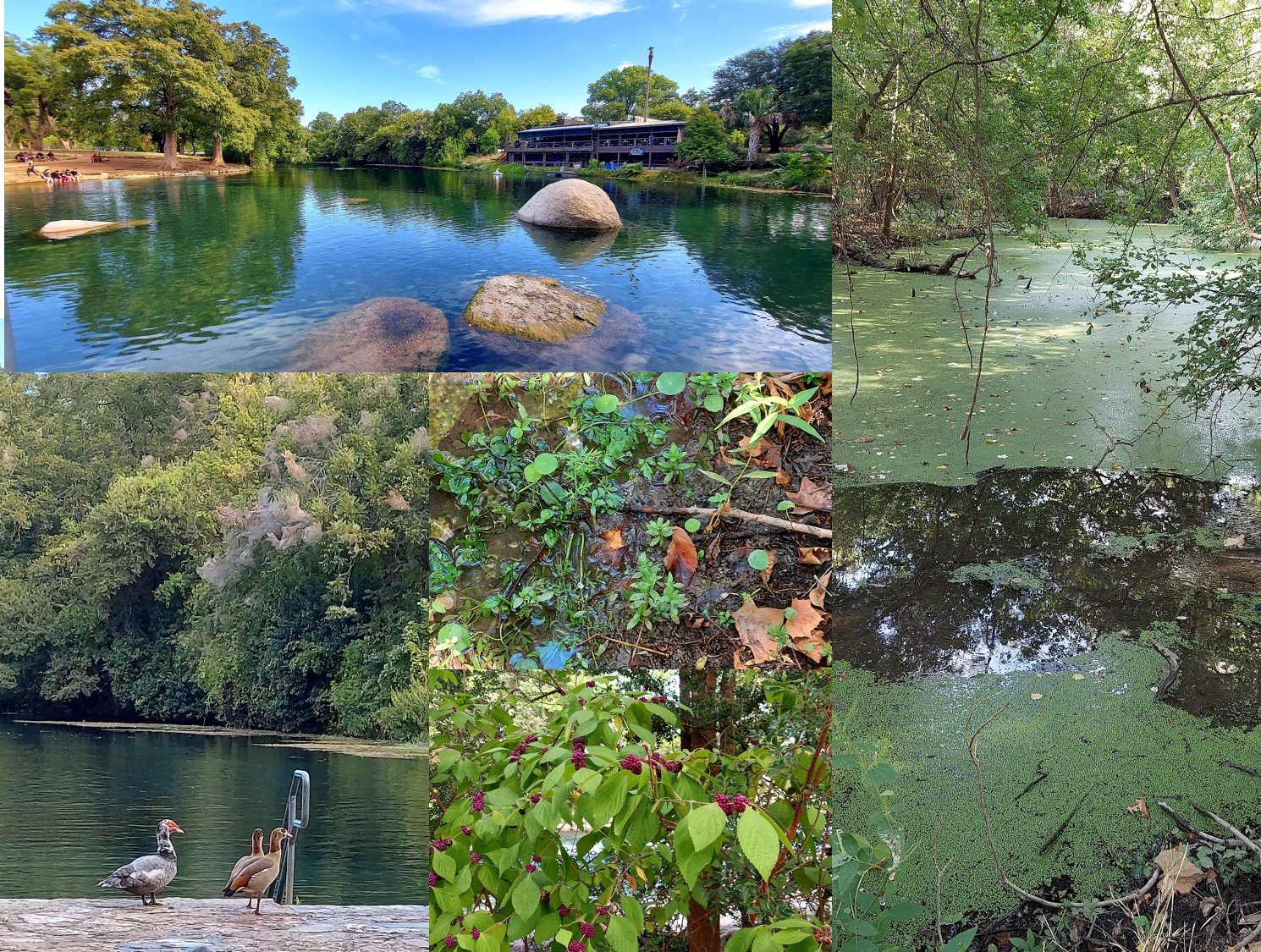San Marcos River
Photos by Melinda Seib
The San Marcos River bursts forth from the Edwards Aquifer through 200 spring openings at the bottom of Spring Lake in the heart of San Marcos, Texas. The river provides a refreshing playground for swimming, canoeing, and tubing. The San Marcos River winds through over 130 acres of parkland. The upper 3.8 miles of the headwaters provides habitat to eight endangered and threatened aquatic species, including the San Marcos Fountain Darter, Texas Blind Salamander, the San Marcos Salamander, and Texas Wild Rice.
Archaeologists have discovered artifacts that indicate that the area around the Springs is one of the oldest continuously inhabited places in North America by human beings, dating back more than 12,000 years.
The river is a natural environment that is home to many different creatures, such as birds, insects, fish, turtles, and snakes. Remember to think like a naturalist and try not to mess with the local habitat.
Note: The river is sometimes very crowded on weekends when the weather is warm. If you are looking for a quieter experience, consider visiting on a weekday.
Location
170 Charles Austin Dr, San Marcos, TX 78666
Hours of Operation: 6 AM - 11 PM
What Can I Do on the River?
Swimming - Downriver of Rio Vista Park, John J. Stokes Park is almost hidden behind the dam above the swimming area. Complete with rope swings, and it is a convenient but secluded spot to enjoy the San Marcos River. Rio Vista Park also has a swimming area.
Fishing – Pole and line, including rod and reel, fishing is allowed. You must comply with state fishing regulations and have a valid Texas fishing license. Regulations can be viewed on the Texas Parks and Wildlife website. Per city ordinance, it is unlawful for any person to possess or shoot a speargun while in or upon city-owned property without a program permit issued by the department. "Speargun" means any device propelling a spear or other type of projectile to shoot or take fish through the water.
Kayaking or canoeing - You can rent from a local vendor or bring your own kayak or canoe and access the river from any river access point.
Tubing - You can enter the river with your tube at City Park: 170 Charles Austin Dr, San Marcos, TX 78666. You can rent tubes from Lion's Club Tube Rental or use your own.
Walking along the river - The San Marcos Riverwalk is an excellent place to enjoy the river. A new 10' wide sidewalk follows the river from City Park to Rio Vista Park. It's ideal for strollers and small children.
Texas Parks and Wildlife - Introduction to Dragonfly and Damselfly Watching
The Friends of The Oxley Center - Damselflies and Dragonflies
Want to know more about Texas wild rice?
Here are some excellent resources:

